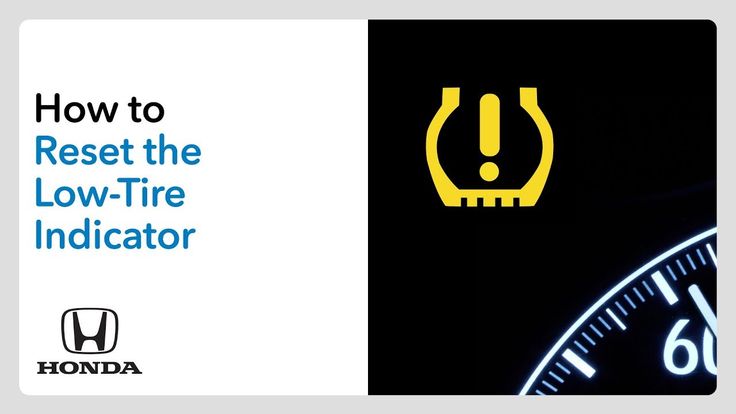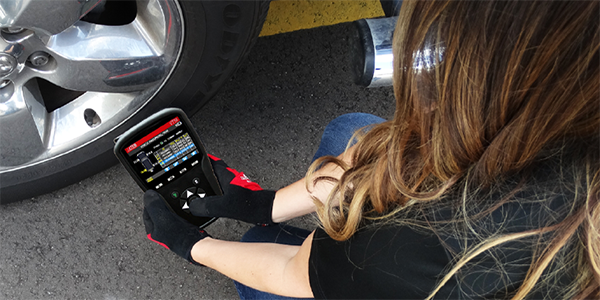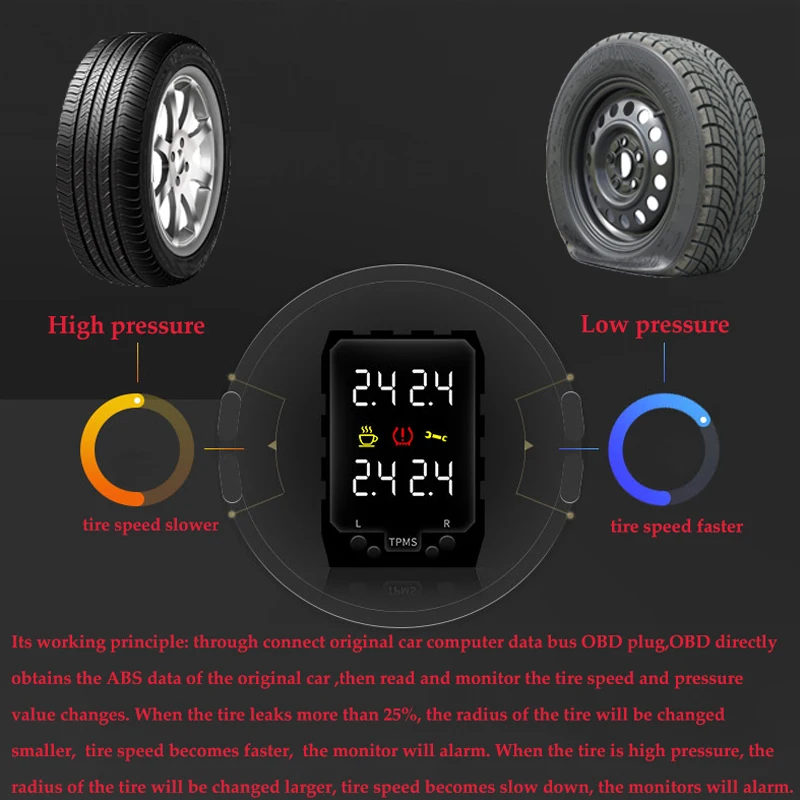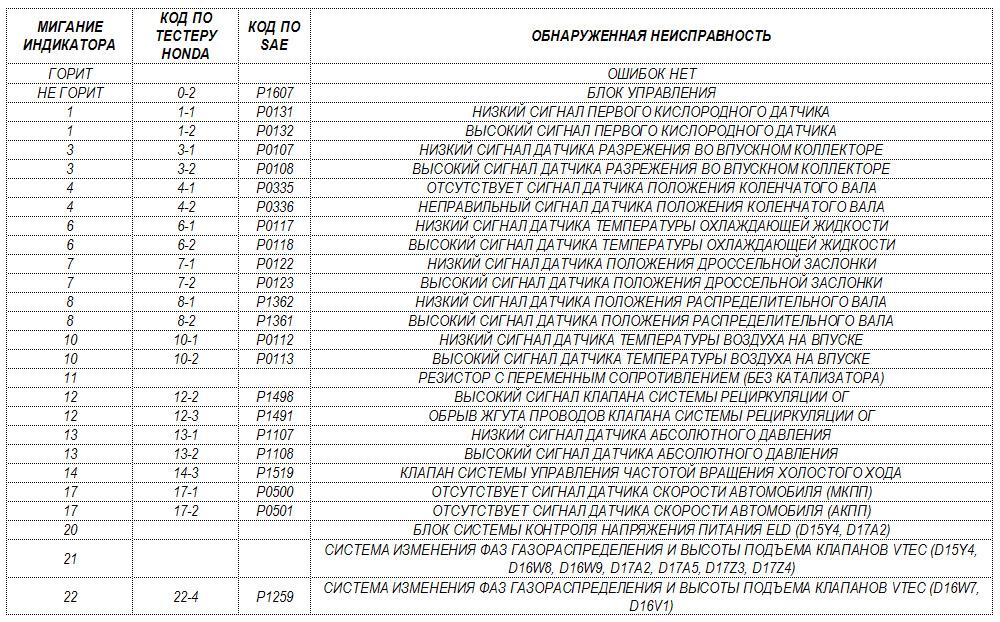Help! I just bought a new 2022 Honda Civic, but one of my tires is already looking low. How do I check the tire pressure on my 2022 Honda Civic?
Mariza Morin · Answered on Nov 14, 2022
Reviewed by Shannon Martin, Licensed Insurance Agent.
Thankfully, 2022 Honda Civics come with a Tire Pressure Monitoring System (TPMS) so you don’t have to manually check the pressure in each tire anymore!
According to Honda, the TPMS “monitors and compares the rolling radius and rotational characteristics of each wheel and tire while you are driving to determine if one or more tires are significantly under-inflated.” So you’ll know when any of your tires are under-inflated when the low tire pressure/TPMS indicator appears on your dashboard.
But if checking the tire pressure yourself becomes necessary, all you have to do is remove your tire’s valve stem cap and use a tire pressure gauge on the valve stem.
Keeping up with the tire pressure on your 2022 Honda Civic is an important part of your regular car maintenance schedule to help keep costs down. And if you’re looking to save on more car-related expenses, you can easily lower your Honda Civic insurance costs when you download the one and only Jerry app!
Here’s how it works: after you download the trusted licensed broker app, just sign up in less than one minute to access several customized quotes from over 55 of the nation’s top insurance companies. Once you find a new policy that works for your budget, Jerry’s team will take care of all the paperwork and phone calls—we’ll even help you cancel your old policy!
MORE: Honda common problems
Honda
View full answer
WHY YOU CAN TRUST JERRY
Jerry partners with more than 50 insurance companies, but our content is independently researched, written, and fact-checked by our team of editors and agents. We aren’t paid for reviews or other content.
Browse More Content
What To Do If Your Headlights Don’t Change from Low to High
What To Do If You Have Low Transfer Case Fluid
Speedometer Sensor Replacement
Water Pump Pulley Replacement
Brake Safety Inspection Cost Estimate
Audi A6 Premium Plus Insurance Cost
Hyundai Azera Se Insurance Cost
Hyundai Veloster Turbo Insurance Cost
Chrysler Pacifica Insurance Cost
Porsche Cayenne S Insurance Cost
Mountain View Car Insurance
Monongahela Car Insurance
Syosset Car Insurance
Holtsville Car Insurance
Richardson Car Insurance
My friend has been bragging about the ceramic coating on his car’s wheels. I don’t really understand the point. What are the benefits of ceramic coating my wheels?
I don’t really understand the point. What are the benefits of ceramic coating my wheels?
Nick Kunze
Apr 08, 2022
My car has developed a weird smell when I turn on the AC, and I’m not sure what’s causing it. What’s an easy fix if my car’s air conditioning system smells like vinegar?
Melanie Mergen
Apr 13, 2022
I’ve owned a BMW X3 for years. While I still love my ride, I’m going to give it to my wife and buy a new SUV for myself. However, I want to switch it up with a little something different. What are some SUVs that are similar to the BMW X3?
Eric Schad
Nov 02, 2022
Browse All Questions
Buying a car in Illinois from out of state can be complicated, but the process for registering an out-of-state vehicle is fairly straightforward.
R.E. Fulton
Oct 28, 2022
Common 2011 Maxima problems include issues with the passenger airbag sensor and problems with the transmission.
Cassandra Hamilton
Oct 26, 2022
Issues affecting the driver’s airbag inflator as well as with the side curtain airbags have necessitated two recalls for the 2017 Chevrolet Traverse.
Jason Tushinski
Oct 17, 2022
Mortgages
Uninsured Motorist Protection
Mississippi
Land Rover
Car Transport
Personal Injury Protection (PIP)
Emergency Insurance
Veterans
Alinsco
Rolls Royce
Corvette
Virginia
insurance claim
car engines
Car Damage
Driving
Lamborghini
Luxury vehicles
Subrogation
Low Cost Auto Insurance Program (CLCA)
Washington DC
Car Dents
North Dakota
Temporary Car Insurance
Rivian
No long forms
No spam or unwanted phone calls
Quotes from top insurance companies
Find insurance savings — it's 100% free
Toyota
Hyundai
Mercedes-Benz
Subaru
Chevrolet
Mitsubishi
By John Goreham G+ Oct 20 2020 - 12:57pm
If you have a Honda Civic with the low tire pressure warning light on, here is what to do and why it came on.
Advertisement
Tire pressure monitoring systems are required on new vehicles by law in America. This is not a feature that Honda installs as a feature on just some Civic trims. For more than a decade, Honda has been installing systems and they have been driving some Honda Civic owners crazy. They certainly do help let you know if a tire is losing pressure. However, in many cases, these systems can be an annoyance as well.
Here are the reasons that your Honda Civic has a “Tire Pressure Monitoring System” alert. We will refer to it as “TPMS” from here forward in our story. Before we begin, if your TPMS system warning light is on now, pull to safety and immediately check your tire pressure. Some vehicles can display the pressure in the vehicle's information display. If your Civic doesn’t, use a tire pressure gauge to check the pressures. The correct setpoints for your Honda Civic are listed on the driver’s door. Do not drive your Civic with the TPMS light on without verifying that the tires have proper air pressure.
Civic Tire Pressure Warning - Temperatures Have Dropped
If seasonal temperatures are dropping and your TPMS warning light has illuminated, the reason is most likely due to the temperature difference between when the pressure was last set and the current temperatures. The pressure inside of a tire drops with temperature declines. You need to reset the tire pressure in early winter and also early summer. Lower pressure does not mean the air leaked out of your tires. The air inside simply became lower in pressure as the temperatures dropped. This happens to all tires, not just those in your Civic, regardless of which gas is inside of them (air or nitrogen).
If you find that the pressure inside your tires is lower than the setpoint, add air to top them off to the correct pressure. The TPMS light will normally go out shortly after you set the pressures to the proper level. If just a single tire is lower than the rest by more than around 30%, have a tire technician investigate.
Civic Tire Pressure Warning - You Have a Flat Or More Than One Flat
The reason you have a tire pressure monitoring system in your Civic is to detect a flat tire. Or possibly more than one flat tire. If the light comes on while you are driving, this is the likely cause. Pull off the road to a safe area as quickly and safely as you can to investigate. A brief visual inspection is not enough. Use a tire gauge to check the pressure in all four of the vehicle's tires. If you have a flat, refer to the Civic’s’ owner’s manual (see below) on what to do.
Civic Tire Pressure Warning - TPMS System Failure
A driver's initial reaction when a warning light comes on is to hope it is just a mistake. The TPMS system in your Civic may have a problem, but it is unlikely. Many people who has a problem with the tire pressure system in any vehicle quickly go to every Facebook forum to report it (angrily). However, the Honda Civic is not a vehicle that struggles with the TPMS system more so than others.
If you have checked that the pressure in your tires is correct using a tire gauge, and the TPMS system is displaying a warning, ask a mechanic for help. You don’t have to go to a Honda dealer, but if your Civic is under the initial new vehicle warranty, that would certainly make sense.
Like any system in your Civic, age and damage can cause a problem with the TPMS system. Individual sensors in the tires can be replaced, but the system's computer will still need to be re-initialized. We suggest that this job is best done by a mechanic or tire professional who understands the system and can handle the work.
Civic Tire Pressure Warning - Tire Sealants
Emergency tire sealants like Fix-A -Flat, or Slime may cause your TPMS sensor to malfunction. This does not mean that the sensor is now broken. Here is what the Fix-A-Flat brand says about TPMS sensors and its product: “Fix-a-Flat is tire sensor safe. After the qualified tire repair professional has repaired your tire, they should clean the TPMS device with water to remove any sealant that may have come into contact with the device. After the repaired tire is replaced and inflated, the TPMS system can be reset and will resume operating as normal.”
After the repaired tire is replaced and inflated, the TPMS system can be reset and will resume operating as normal.”
Civic Tire Pressure Warning - New Tire Or New Tires
If you buy new tires for your Civic and immediately get a tire pressure warning light, check the pressure. Flats can happen any time, even driving out of a tire shop parking lot. If you have checked the pressure and it is properly set, return to the tire shop and let them know that the Civic’s TPMS system has indicated a problem. If the shop changed the valve stems in the tires, the system's computer may need to be re-initialized.
Be aware that some TPMS systems are sensitive to the sizes of tires. You should only use the exact size tire your Civic came with. If you have mounted aftermarket wheels with a different size tire, the retailer who did the work should be able to explain to you how they will resolve the TPMS system errors.
Civic Tire Pressure Warning - Nitrogen Is Unnecessary
There are some dealers and shops that suggest nitrogen as a solution to a TPMS problem in a Civic The claims that these advocates of nitrogen for tires make are unfounded by science.
Furthermore, your Honda Civic was designed to work perfectly fine using compressed air. Can inflating an underinflated tire with nitrogen cause the TPMS light to go out? It might. Just as inflating the tire with compressed air should do. If you wish to spend money on nitrogen, feel free. Just know that the Civic doesn’t need it.
A TPMS system alert can be an annoyance, but for the most part, it is a feature that is intended to help us in case a dangerous situation develops. Add air to your Civic’s tires when temperatures begin to drop in early winter. Reset the pressure to the proper PSI again in early summer. These are the best two habits you can have to avoid TPMS issues in your Civic.
Resources:
Honda Civic Owner's Manual Link
Civic Tire Pressure Frequently Asked Questions:
Q: How do you reset the TPMS light on a Civic?
A: Use the owner's manual link at the bottom of the story to find your Civic’s year and instructions. Follow them, but be aware that resting the system may not solve the underlying issue.
Follow them, but be aware that resting the system may not solve the underlying issue.
Q: Can the TPMS be in the Civic turned off?
It cannot be turned off. It can be reset.
Q: Is it dangerous to drive with the tire pressure light on?
A: Yes, driving without knowing why the light is on is dangerous until you have checked the pressure with a tire pressure gauge to verify that the pressures are correctly set.
John Goreham is a long-time New England Motor Press Association member and recovering engineer. Following his engineering program, John also completed a marketing program at Northeastern University and worked with automotive component manufacturers. In addition to Torque News, John's work has appeared in print in dozens of American newspapers and he provides reviews to many vehicle shopping sites. You can follow John on Twitter, and view his credentials at Linkedin
Hover mouse over image to see photo credits
Car Questions
Automotive News
Honda News and Reviews
Honda CR-V
Follow Torque News on YouTube, Twitter and Facebook.
Honda Tire Pressure Monitoring System (TPMS) has its own specifics when programming new sensors, data registration and calibration. But with basic knowledge, servicing Honda TPMS systems is easy.
Honda's direct TPMS systems with pressure sensors in each wheel are difficult to compare with other vehicles using the same type of TPMS as they require special hardware to connect via the OBD II connector and the procedures are similar. However, there are exceptions, such as Honda Pilot (automatic programming of the system) and vehicles using indirect TPMS systems that use the ABS readings in operation, the difference in wheel speed depending on pressure, i.e. there are no pressure sensors in the system, for example, Honda Civic, Accord, other models after 2012 of release.
Most specialized TPMS service tools can activate the sensors to receive an identification signal from the sensor and their position in the vehicle. The information is then fed through the OBD II connector to the TPMS module. Programming is carried out using a scanner. For Honda's direct TPMS systems, 45 km/h is the magic number. After the vehicle has reached a speed of 45 km/h and has been driven for at least a minute, the system acknowledges the sensor signals, identifies them and captures the pressure information. Speed is not detected by sensors, speed is determined via CAN bus and TPMS module. Honda engineers believe that at this speed the system is less susceptible to interference from other sensors and radio frequencies.
Programming is carried out using a scanner. For Honda's direct TPMS systems, 45 km/h is the magic number. After the vehicle has reached a speed of 45 km/h and has been driven for at least a minute, the system acknowledges the sensor signals, identifies them and captures the pressure information. Speed is not detected by sensors, speed is determined via CAN bus and TPMS module. Honda engineers believe that at this speed the system is less susceptible to interference from other sensors and radio frequencies.
If a vehicle arrives at the garage with the TPMS warning light on, inflate the tires to the prescribed pressure and drive the vehicle at 45 km/h for one minute. The low system pressure indicator should turn off. 45 km/h - the speed of movement for each procedure of reprogramming the system and registration of data. For indirect type systems, there are other magic numbers - driving at a speed of 65 - 95 km / h for 20 minutes. The initialization process occurs by pressing the TPMS reset button on the instrument panel or steering wheel.
Hondas with direct systems typically have two TPMS lights on the instrument panel. One ISO standard indicator for low tire pressure, another TPMS MIL indicator. In the event of a malfunction in the TPMS system, the module displays a fault code, but goes into safe mode. The system does not notify the driver of a dangerous low tire pressure. In the event of a malfunction, the TPMS system generates indicator flashes every 30-90 seconds and the flash cycle repeats. A working system signals one signal that lights up for a couple of seconds, then the indicator goes out.
The TPMS fault code is stored in non-volatile memory and cannot be cleared by disconnecting the cable from the battery. To erase the fault code, you must use a scanner. The system memory may contain all the TPMS trouble codes that may occur. But, if the same code occurs twice or more, in most cases the subsequent code is overwritten with the previous one, thus saving each last of the TPMS system fault codes.
When a flat tire is replaced with a spare in a direct type system, the TPMS sets DTCs 32, 34, 36, 38 because the system no longer receives a signal from the flat tire sensor.
Honda TPMS indirect type does not include wheel pressure sensors. The system determines the reduction in tire pressure by comparing the relative speed of rotation of the wheels through the ABS wheel sensors. When the tire pressure is reduced, the wheel diameter is slightly reduced. This type of system has been installed on the Honda Accord since 2013. Recalibration must be carried out in the event of a change in tire pressure or adjustment to normal. The process does not require the use of special tools, it is carried out using the TPMS reset button located under the steering wheel or a combination of pressing the information center button, or the button located on the steering wheel.
1. Make sure the vehicle transmission is in neutral or park.
2. Check all wheel dimensions and type.
3. Set the correct tire pressure.
4. Switch on the ignition.
Press and hold the TPMS button located on the lower left of the instrument panel until the TPMS low tire pressure indicator flashes twice. If the indicator does not flash, press and hold the button again. Recalibration will be completed after running for 20 minutes at 65-95 km/h
1. Using the monitor and steering wheel controls, select Vehicle Settings, press the SEL/RESET button. The calibration process will start.
2. The display will switch to setting mode when you select, cancel or calibrate.
3. Select Calibration, then press the SEL/RESET button. If the process has started, the monitor will display Calibration Started. If the message Calibration Failed to Start appears, repeat steps 2 and 3. Recalibration will be completed after running for 20 minutes at a speed of 65-95 km/h
Recalibration will be completed after running for 20 minutes at a speed of 65-95 km/h
1. Use the monitor and steering wheel controls, press Menu/MENU and go to Vehicle Menu
2. Select Customized Settings and press the SOURCE button.
3. Select TPMS Calibration, then press the SOURCE button. The display will switch to the settings menu when you select between Cancel or Initialize/Apply. If the calibration is completed the TMPS will return to the settings menu. If you see an inscription about the impossibility of initializing the TPMS system, repeat steps 2 and 3. Recalibration will be completed after running for 20 minutes at a speed of 65-95 km/h
Subscribe to Articles and Newsletters
Get Full Access Buy Autodata
04/08/2013, 11:56 #1
Tell me, has anyone had this problem? Tire pressure sensor lit up! The pressure in the wheels is normal, I didn’t get into the pits, I haven’t changed winter tires yet.It caught fire out of the blue and has been burning for three days already. What should I do? Should I go straight to the dealer or can I wait for T.O. to come up?
Reply with quote
04/08/2013, 12:02 #2
Through the i-mid menu, with the engine turned on, activate the tire pressure monitoring system, the indicator will go out, then you need to continue monitoring - a slow puncture may
Reply with quote
04/08/2013, 16:17 #3
changed tires - after 100 km of run it caught fire and burns all day today. a colleague at work has the same Civic and the same situation!
Reply with quote
04/08/2013, 17:36 #4
Message from McPherson
changed tires - after 100 km of run it caught fire and burns all day today.
Everything is logical. The computer counts the number of revolutions of the wheel, and the summer one probably differs in diameter, respectively, and produces a different number of rotations. Just when changing tires, it was necessary to reset the pressure sensor through the menu and activate it againa colleague at work has the same Civic and the same situation!
Reply with quote
04/08/2013, 18:01 #5
There was such garbage, but after it sank a bit at speed, I drove to the service, measured the pressure, they said everything was ok. rebooted the sensor through the menu - everything disappeared, since then it has not bothered yet)
Reply with quote
04/08/2013, 21:40 #6
Message from ars50
Through the i-mid menu, with the engine turned on, activate the tire pressure monitoring system, the indicator will go out, then you need to continue monitoring - a slow puncture may
Thank you! Everything turned out
Reply with quote
04/08/2013, 23:16 #7
In general, the sensors do not light up, the indicators light up.and there are no sensors in the wheels.
Reply with quote
06/02/2013, 13:03 #8
also caught fire out of the blue after changing shoes, I’m waiting for 1 MOT, I didn’t manage to throw it off myself through the amide ...
Reply with quote
06/02/2013, 20:45 #9
Message from biost
also caught fire out of the blue after changing shoes, I'm waiting for 1 MOT, it didn't work to throw it off myself through the amide ...
what can't happen there?
Reply with quote
06/02/2013, 21:08 #10
Message from alf555
in general, the sensors do not light up, the indicators light up.
